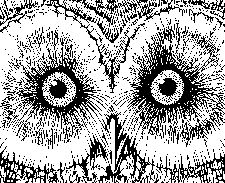This is an archived article. For the latest news, go to the Advance Homepage.
For more archives, go to the Advance Archive/Search Page 
| |
|
Mention "diversity of species" and the tropical rain forest may come to mind. But there is an abundance of living things much closer to home, and — with the help of UConn scientists — the Museum of Natural History plans to count them.
The museum plans to hold a one-day BioBlitz in Hartford's Keney Park on June 12. The primary activity is to count as many species as possible in a 24-hour period. UConn faculty members, graduate students and scientists from around the state will conduct the inventory, and museum staff will organize related activities for the public. "The BioBlitz is a tool for increasing public awareness of biodiversity at home and for promoting appreciation of public parks," says Ellen Censky, director of the Connecticut State Museum of Natural History at UConn. "We will be taking UConn scientists on the road with us." The event is one example of how the museum is working closely with faculty and students to expand scientific knowledge of the natural world and make the information available to the public. "The museum gives an opportunity for faculty members in a wide range of academic disciplines to interact with the public in ways that are quite different from the ways they interact with their academic colleagues or students," says John Allen, professor of geography, who was a consultant for a Ken Burns documentary on Lewis and Clark. "This is particularly important for a land grant institution, where public service is a vital part of the mission." The involvement of UConn faculty and students in museum programs reflects a change in the role of museums. Traditionally oriented toward research and collections, natural history museums are now increasingly viewed as institutions of public learning, and their numbers and popularity have soared. Last year, 43 faculty or staff, 37 graduate students and 65 undergraduates were involved in presenting programs for the museum. Bruce Goldman, a professor of physiology and neurobiology, says the museum's events have given him the chance to showcase his research. "Most scientists rarely have an opportunity to interact directly with the public in explaining their work. In three events that featured work from my laboratory, it has been gratifying to experience the interest of those who attend." Goldman's most recent program for the museum, featuring naked mole rats navigating through Plexiglas tunnels, attracted 150 people. Elizabeth Hanson, professor of political science, presented an ethnic dinner talk about Nepal last fall. "It was attended by Nepalese students from UConn, colleagues from my own and other disciplines, and members of the community," she says. "The experience offered the opportunity to incorporate my research with spectacular experiences I'd had in Nepal during Fulbright trips to the region." The museum also provides opportunities for UConn students to learn outside the classroom. The Napier Discovery Center, opened in 1996, has enabled some faculty to hold laboratories for their classes there and use museum exhibits as part of their courses. "The museum exercise gave us a chance to see what the college campus offers," said a student in Robert Thorson's geology class Age of the Dinosaurs. "We found ourselves staying after class for a couple of hours to look at other exhibits." Other UConn students have gained practical experience at the museum, developing educational materials such as exhibits and discovery kits or leading public programs or tours at the museum. A new joint program with the School of Education will pair student interns with middle school teachers to design and test discovery kits using museum specimens. These kits will then be available for middle school teachers from around the state. "The museum is a wonderful place, not just because of the programs it does on campus but also because of the contributions it makes throughout the state," said U.S. Rep. Sam Gejdenson during a recent visit. Not only do museum programs take UConn experts out and about, but the museum also is an attraction that brings thousands of visitors to the Storrs campus each year. Some of them later apply to the University as students. "My earliest thoughts about coming to UConn were as a child attending museum programs," says undergraduate Mike Plis of Waterford. Also among those taking part in museum programs are faculty and staff and their families. "The museum is proving to be a wonderful means for teaching my four-year-old son not only respect and love for nature," says Anne Hiskes, professor of philosophy, "but also respect and love for learning and discovery." Carol Davidge |

